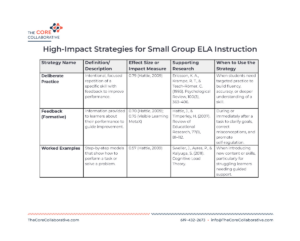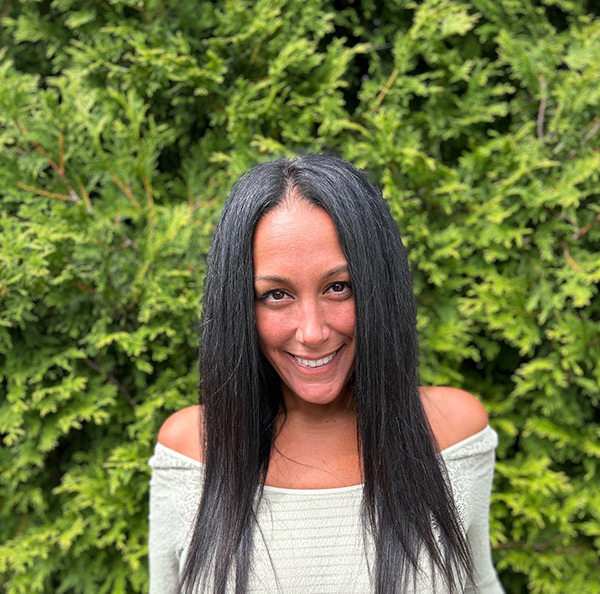Creative problem-solving isn’t just about finding an answer—it’s about imagining new possibilities when the old solutions aren’t enough. In education, it’s the engine that drives real change for teachers and students alike.
At IS 72 in New York, a team of educators faced a familiar challenge: a need to provide meaningful professional learning to build student literacy skills using resources from the city’s newly mandated ELA program. To ensure Michael Fullan’s warning, “when a change is introduced, things get worse before they get better (2001),” did not come true, educators at IS 72 leaned into creative problem-solving.
Creative Problem-Solving Approach
- Notice the current reality of literacy learning in the classrooms
- Gather and analyze multiple sources of data (instructional practice via observation, student voice, student performance, teacher perception, etc.)
- Define the puzzle of practice
- Brainstorm possible solutions to the puzzles discovered by the team
- Select an innovative strategy to implement first
- Implement the selected strategy
- Evaluate the impact of the implementation
- Repeat the process
Their creative solution?
IS 72’s leadership team gathered and shared evidence of student strengths and struggles related to the new literacy program. For some grades, the students struggled with comprehending grade-level text; in other grades, they struggled to respond logically to analysis questions, and in others, they still needed to demonstrate proficient written responses to text.
After the evidence was shared, IS 72’s leadership team worked with The Core Collaborative to co-create a professional learning plan that was differentiated and personalized to build the capacity of the educator team. Personalized learning isn’t just for students—it’s a game-changer for educators, too. Together, they crafted professional learning that wasn’t off-the-shelf—it was made-to-order.
Realizing each team’s needs, the first solution was to structure collaborative planning time, which included analyzing results from diagnostic and classroom assessments and student work samples, making data-driven instructional decisions, and reflecting on their clarity and impact. This structure quickly resulted in improved lesson plans and student performance.
With a solid structure for team planning in place, they now focused on the second solution, which was the implementation of teaching practices in the classroom. They collected and analyzed data from classroom observations, teacher reflection, and triangulation with student assessment data to determine their next grade-level puzzle of practice.
 To solve these puzzles, charts like the one pictured were created to highlight potential research-based practices. Key strategies were then selected. Each strategy was introduced, demonstrated, and discussed so teachers could integrate new learning into their teams’ planning and then into the classroom.
To solve these puzzles, charts like the one pictured were created to highlight potential research-based practices. Key strategies were then selected. Each strategy was introduced, demonstrated, and discussed so teachers could integrate new learning into their teams’ planning and then into the classroom.
Each team took time to celebrate and share feedback along the way, affirming the impact of leveling up practice, embracing a growth mindset, and professionally collaborating. The impact on the teams was immediate: stronger ownership of professional learning, a deeper culture of innovation, collaboration, and reflection, and sharper, more relevant, and empowering ELA instruction for students.
Leadership expressed gratitude for the modeling of lesson planning and the teachings and resources provided around best instructional strategies-noting that it helped to get HMH (their recent curricular adoption) planning off the ground. Teachers increased comfort with each subsequent planning and reflection session and appreciation for meeting their personal needs.
IS 72’s journey shows that when educators embrace creative problem-solving, they unlock solutions that are innovative, impactful, and deeply human-centered. And when that happens, everyone wins—teachers, students, and the community.
When teachers have a voice in their professional learning, when it’s built with them and for them, real growth takes off.
References
- Bandura, A. (1986). Social foundations of thought and action: A social cognitive theory. Prentice-Hall.
- Black, P., & Wiliam, D. (1998). Assessment and classroom learning. Assessment in Education: Principles, Policy & Practice, 5 (1), 7–74. https://doi.org/10.1080/0969595980050102
- Chin, C. (2007). Teacher questioning in science classrooms: Approaches that stimulate productive thinking. Thinking Skills and Creativity, 2 (1), 1–19. https://doi.org/10.1016/j.tsc.2006.09.001
- Ericsson, K. A., Krampe, R. T., & Tesch-Römer, C. (1993). The role of deliberate practice in the acquisition of expert performance. Psychological Review, 100 (3), 363–406. https://doi.org/10.1037/0033-295X.100.3.363
- Fisher, D., & Frey, N. (2013). Better learning through structured teaching: A framework for the gradual release of responsibility (2nd ed.). ASCD.
- Fullan, M. (2001). The New Meaning of Educational Change. Teachers College Press.
- Graham, S., & Perin, D. (2007). Writing next: Effective strategies to improve writing of adolescents in middle and high schools. Alliance for Excellent Education. https://all4ed.org/reports-factsheets/writing-next-effective-strategies-to-improve-writing-of-adolescents-in-middle-and-high-schools/
- Hattie, J. (2009). Visible learning: A synthesis of over 800 meta-analyses relating to achievement. Routledge.
- Hattie, J., & Timperley, H. (2007). The power of feedback. Review of Educational Research, 77 (1), 81–112. https://doi.org/10.3102/003465430298487
- Marzano, R. J. (2004). Building background knowledge for academic achievement: Research on what works in schools . ASCD.
- Palincsar, A. S., & Brown, A. L. (1984). Reciprocal teaching of comprehension-fostering and comprehension-monitoring activities. Cognition and Instruction, 1 (2), 117–175. https://doi.org/10.1207/s1532690xci0102_1
- Sadler, D. R. (1989). Formative assessment and the design of instructional systems. Instructional Science, 18 (2), 119–144. https://doi.org/10.1007/BF00117714
- Sweller, J., Ayres, P., & Kalyuga, S. (2011). Cognitive load theory. Springer.
- Zwiers, J. (2011). Academic conversations: Classroom talk that fosters critical thinking and content understandings. Stenhouse Publishers.



